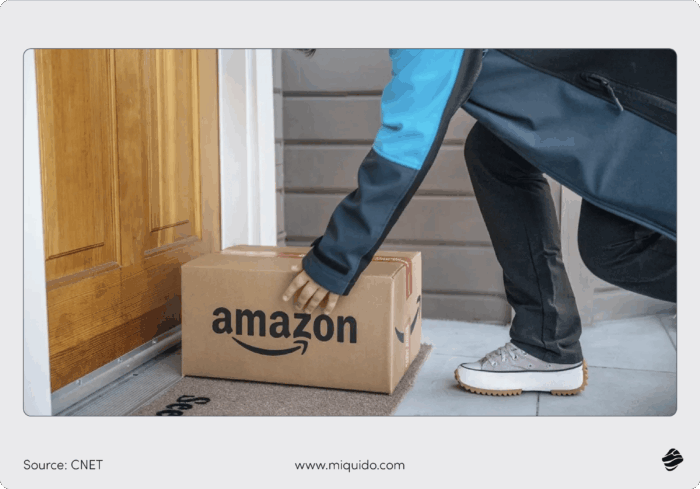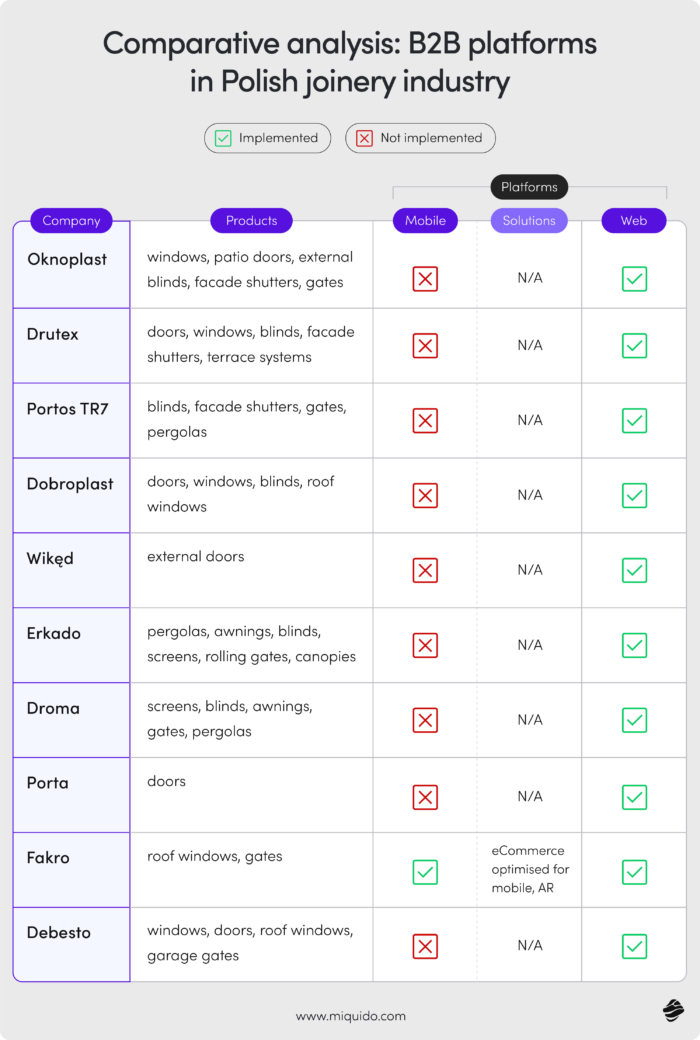Technology decisions in a company? It’s one of those challenges that can end in triumph or spectacular failure. And if someone says that choosing a mobile app, a customer service system, or an expansion strategy for new markets is a simple matter, well… they probably haven’t done it seriously.
A well-executed competitive analysis is the difference between a blind shot and a strategic move on the chessboard. Everyone knows this in theory, but how many actually pay due attention to it? Too many decision-makers rely on intuition instead of examining what mistakes others have made and how to avoid them. So, when should you really take a closer look at the competition?
Key benefits of competitive analysis
Discover the advantages of competitor analysis and cases in which you may apply it. The role of competitor analysis in today’s business landscape is very broad, yet it is not always used as a tool for the successful implementation of new companies or ideas. Check, based on real-life examples, why it is a mistake and discover practical tips for conducting effective competitive analysis.
Mitigating business risks
A poorly chosen technology or business model can be a financial disaster. Studying the failures of others provides a roadmap to avoid common pitfalls. For instance, in the customer service space, analyzing whether AI chatbots or hybrid support models work best helps businesses make informed technology choices. By conducting effective competitor analysis, you will gain a clear idea of your project’s strengths and weaknesses and build your unique selling proposition without risks.
Enhancing business communication
By understanding market trends and customer expectations, businesses can tailor messaging that resonates with their audience. For example, leading e-commerce players use customer insights to personalize communication and whole marketing strategies, improving engagement and conversions. Analyzing how direct competitors frame their messaging, handle customer inquiries, and manage brand reputation can reveal gaps in your own strategy.
You can conduct competitive analysis to discover which communication channels are most effective, what tone and style resonate with the target audience, and how quickly and effectively competitors respond to customer concerns.
One of the most problematic aspects of business communication—and a major reason why companies fail—is misalignment between brand messaging and customer expectations. Many businesses focus too much on what they want to say rather than what their audience needs to hear. Competitive analysis helps bridge this gap by uncovering which messages work, which fail, and why, ensuring that your brand communicates with clarity, relevance, and impact.
Securing new market expansion
Entering a new market? Great. But what if someone has already tried and failed? Competitive companies can provide valuable lessons: who succeeded, who failed, and why. Their mistakes can serve as your roadmap.
A good example? Many international giants have completely flopped in their expansion into the Australian market, even though, technically, it could have been easier to conquer than, for instance, Asian. However, things turned out differently, especially for café chains that perform well globally. Both Starbucks and Dunkin’ Donuts underestimated Australia’s distinct coffee culture. As a result, Starbucks had to close many of its stores, while Dunkin’ Donuts exited the Australian market entirely.
Sometimes just the naming can cross company’s chances of succeeding with releases on new markets. This is a story we often heard in automobile industry – think of Mercedes-Benz’s Bensi, which translates to “rush to die” in Chinese or Chevrolet’s “Nova” in Latin America (“No va” translates to “doesn’t go” in Spanish).
Legal regulations, customer preferences, cultural and linguistic nuances – all these factors can determine success or failure. Market analysis gives you an edge by showing how to adapt your strategy, drawing a competitive landscape and outlining the mistakes the others made – so that you don’t have to.
Understanding customer needs
Customer frustration with inefficient systems leads to churn. Researching industry standards ensures companies meet expectations. Many businesses have improved customer satisfaction by studying how competitors optimize UX, performance, and support systems.
Aside from setting the right course for digital product’s success, competitive analysis can be helpful in company processes which imply daily interaction with customers, like customer service. Think about it – how many times have you been frustrated by poor customer service? Now – your customers have their limits, too.
Competitive analysis allows you to check what standards prevail in the industry and what actually works. Instead of blindly following trends, you can make a choice that actually reflects your users’ preferences and includes their limits and challenges. AI bots, personalized support, or maybe hybrid customer service models? You can learn a lot from the competitive landscape, observing how the clients of your competition react to particular innovations.

You can learn, for instance, that sometimes trying to adopt new trends in customer service or any other area as quickly as possible can backfire. Take the case of Wendy’s, a popular U.S.-based fast-food chain, which implemented a GenAI chatbot in its drive-thru with unexpected results.
What failed? Based on customers’ complaints, the chatbot was not adapted to the specifics of drive thru – it had trouble understanding the orders, customizing them and would not give customers enough time to think.
Similarly, with competitive analysis you can examine which solutions for customer service, like CRMs or helpdesk systems, work best for market leaders. Why experiment when you can use proven patterns? Checking even a fraction of tools available on the market requires a lot of time investment and, of course, means costs. Using the competitive analysis in today’s market, you can narrow down the spectrum of considered options to the best fits without having to try them all.
Informing decision-making processes
Every startup wants to be a “game changer,” but how many actually check what the competition has already implemented and what has completely failed? The truth is, many skip this step – and often it buries their chances for success.
The competitive analysis will help you understand whether somebody actually tried to implement a similar idea before you and what went wrong, if it did. Startups often assume innovation means “new” when it could mean “better execution” of existing solutions.
Strategic choices should be data-driven, not based on guesswork. Whether refining product features or implementing new technologies, competitor insights provide valuable direction. Competitive analysis will help you look at your feature scope at a new angle, learning from the other companies.
Do your new features solve real user problems, or are you just adding something for the sake of adding? Testing competing solutions provides answers. Sometimes, the advantage isn’t in creating a new feature but in perfecting something that already exists. Maybe your rivals launched something that works poorly, and you can do it better?
Gaining competitive advantage
A strong competitive analysis doesn’t just reveal what technologies competitors use—it also uncovers their business models. Studying how leading companies adapt and evolve can be a game-changer.
For example, Amazon has shifted its sales model from “Shopping & Shipping” to “Shipping & Shopping.” This change means that customers are more frequently shown products that are readily available for immediate shipping. By prioritizing fast delivery, Amazon ensures that orders arrive as quickly as possible—often within just a few hours on the same day—enhancing convenience and customer satisfaction.

Similarly, companies that analyze how competitors refine their subscription services, introduce freemium models, or implement dynamic pricing strategies can gain valuable insights to improve their own approach.
Understanding how direct and indirect competitors monetize their products, structure their business models, and engage with users can be a game-changer. Amazon’s pivot from “Shopping & Shipping” to “Shipping & Shopping” illustrates how strategic shifts can revolutionize customer experience and market dominance.
Tracking market trends
Staying ahead requires constant monitoring. Industry leaders use market research and competitive analysis to detect shifts in technology adoption, pricing models, and customer expectations. FMCG brands, for example, continuously refine loyalty programs based on competitor insights and consumer data.
Your own data can reveal many valuable insights regarding target market trends. Collecting them through digital product and social media channels is a great way to improve your results. However, putting these insights in perspective with a competitive analysis will help you separate trends worth following from these which will likely not benefit your business.

Conclusion
Technology decisions are not easy, but making them without checking the competition is asking for trouble. Whether you are developing an app, implementing new functionalities, improving customer service, or entering new markets – competitive analysis should be your first step.
Want to avoid mistakes in software development and marketing tactics? Conduct a competitive analysis and market research with an experienced partner using verified methodologies to give you a big picture. Identify your primary competitors, understand your target audience, identify market gaps and polish your unique selling proposition usp based on verified market insights.

![[header] benefits of competitive analysis in your business strategy](https://www.miquido.com/wp-content/uploads/2025/04/header-benefits-of-competitive-analysis-in-your-business-strategy.jpg)


![[header] how is ai used in the music industry overcoming trust, fraud & transparency challenges with ai](https://www.miquido.com/wp-content/uploads/2025/04/header-how-is-ai-used-in-the-music-industry_-overcoming-trust-fraud-transparency-challenges-with-ai-432x288.jpg)

![[header] benefits of competitive analysis in your business strategy](https://www.miquido.com/wp-content/uploads/2025/04/header-benefits-of-competitive-analysis-in-your-business-strategy-432x288.jpg)
![[header] off the shelf vs. custom ecommerce software](https://www.miquido.com/wp-content/uploads/2020/05/header-off-the-shelf-vs.-custom-ecommerce-software-432x288.jpg)
